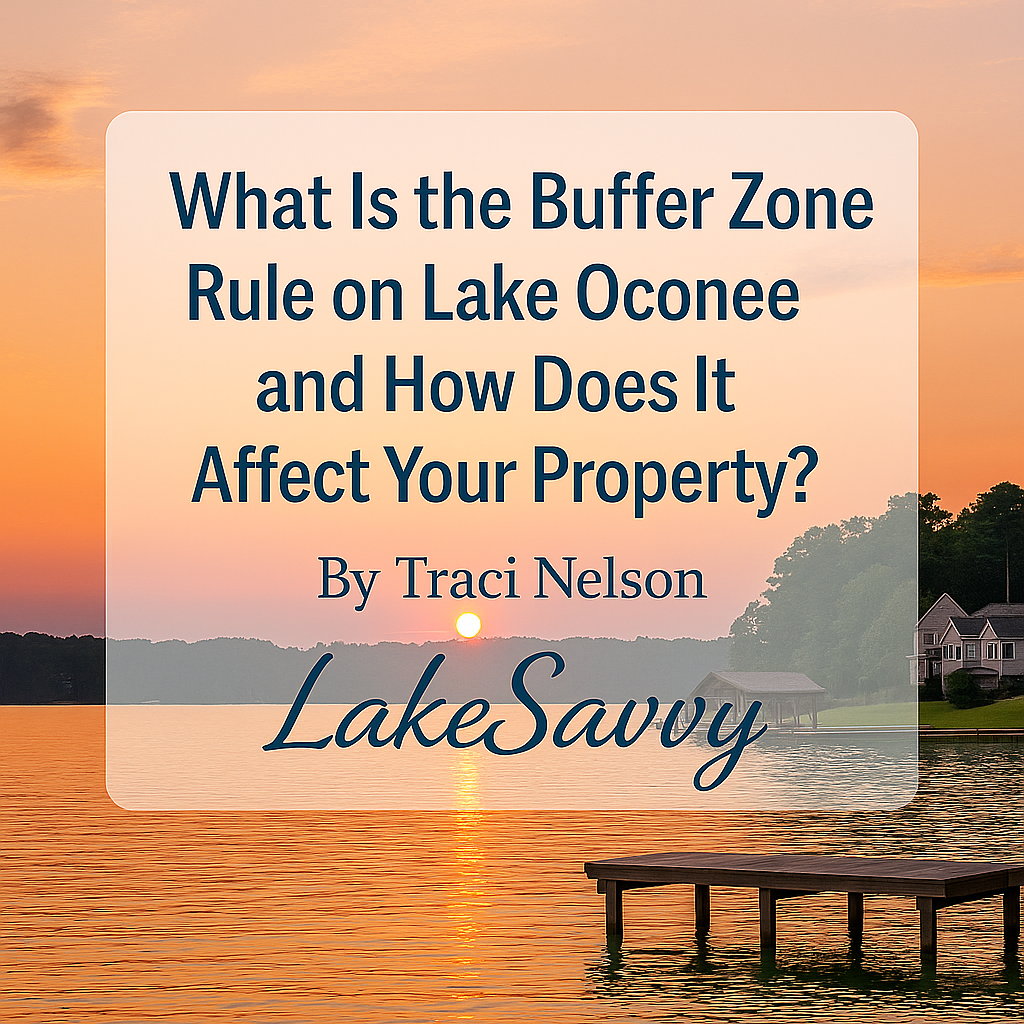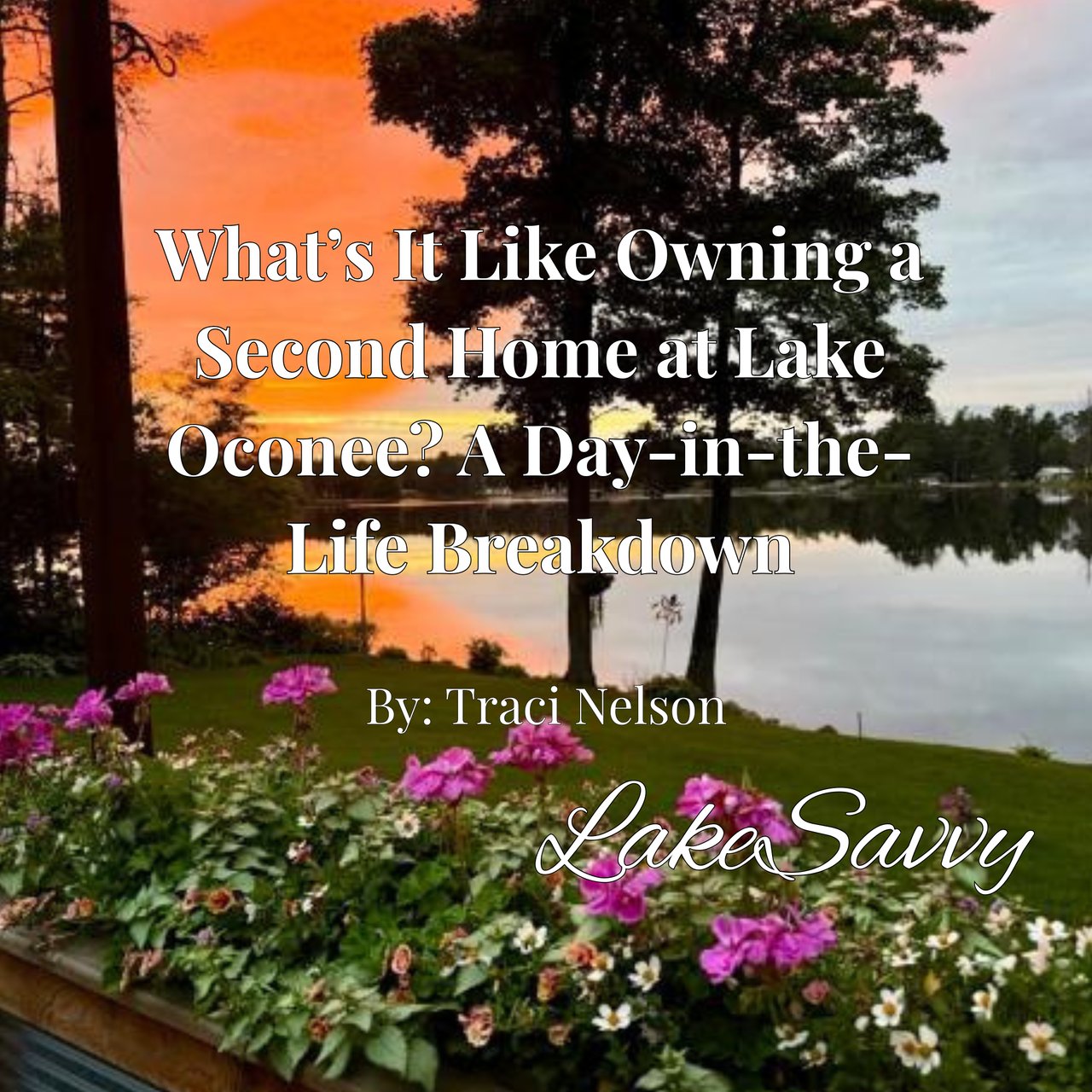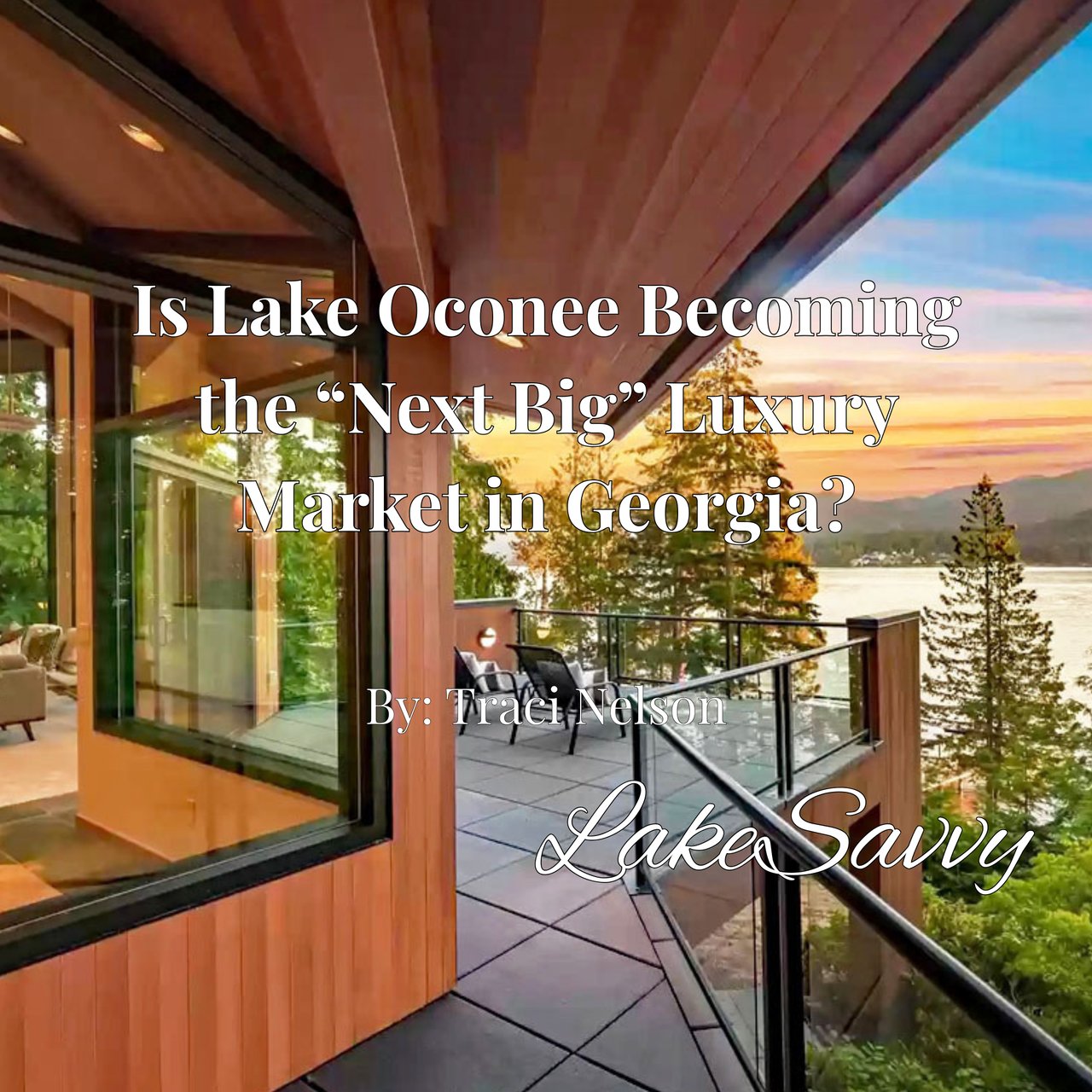Why Lake Oconee’s Buffer Zone Rule Exists
Lake Oconee is one of Georgia’s premier waterfront communities—and with that prestige comes strict regulations to protect the shoreline. One of the most important is the buffer zone—a protected strip of land owned and managed by Georgia Power, which separates private property from the lake itself.
This zone exists to:
-
Preserve natural vegetation and prevent erosion
-
Protect water quality from runoff and development
-
Maintain uniform shoreline aesthetics
-
Ensure consistent property use rules for everyone
Failing to understand buffer zone guidelines could mean fines, denied permits, or limited resale appeal—something Traci Nelson, a trusted Lake Oconee real estate expert, helps her clients avoid.
How Wide Is the Buffer Zone?
Most buffer zones at Lake Oconee range from 25 to 75 feet from the shoreline, though this can vary depending on topography and lot layout. The land within this area is not owned by the homeowner—it’s leased from Georgia Power.
Here’s what that means:
| Feature | Homeowner Control | Georgia Power Control |
|---|---|---|
| Lawn & landscape choices | Limited | Yes |
| Building structures | No | Yes |
| Dock or seawall approval | No | Yes |
| Tree removal | With permission | Yes |
Traci Nelson works directly with Georgia Power representatives and zoning officials to verify each property’s specific buffer zone terms—especially important before making an offer or listing a home.
What You Can and Can’t Do in the Buffer Zone
If you’re buying a home on Lake Oconee or planning to sell your home, it’s essential to understand what’s allowed within the buffer zone.
What You Can Do (with Approval):
-
Maintain grass and remove brush
-
Install riprap or erosion control (with a permit)
-
Place irrigation lines (sometimes)
-
Apply for a dock or seawall permit through Georgia Power
What You Can’t Do:
-
Build any structure (fence, patio, fire pit) without approval
-
Pave or alter the grade significantly
-
Clear-cut trees or plant invasive species
-
Place storage units, furniture, or sheds
Traci’s Tip: Even decorative changes like flowerbeds or walkways may require written approval—never assume approval is automatic just because it’s near your home.
Why This Matters for Sellers
When it’s time to sell your home on Lake Oconee, buffer zone violations can reduce property value or delay closing. Here’s why:
-
Buyers may be hesitant if they can’t use the shoreline as expected
-
Unpermitted docks or seawalls may require removal or fines
-
Over-altered zones could trigger mandatory restoration, affecting your resale
-
Non-compliant landscaping or hardscapes may need correction before listing
Traci Nelson’s approach ensures that all shoreline elements are legally compliant and marketable before your home hits the market—saving you money, time, and stress.
Lake Oconee Communities with Strict Buffer Zone Enforcement
Not all lakefront neighborhoods are alike. Traci has worked with buyers and sellers in Lake Oconee communities like:
-
Harbor Club – Heavily regulated shoreline aesthetics
-
Cuscowilla – Close cooperation with Georgia Power for vegetation rules
-
Great Waters – Buffer zone rules integrated into HOA covenants
-
Reynolds Lake Oconee – Custom dock and shoreline review committee
In these areas, HOA guidelines often add additional rules beyond the Georgia Power buffer regulations. Traci Nelson navigates these layers of compliance for you.
Buffer Zone Missteps to Avoid
Here are a few real examples Traci has seen that caused major issues for buyers and sellers:
-
A homeowner installed a fire pit too close to the water—Georgia Power required full removal before the home could be sold.
-
A buyer assumed they could add a second dock for jet skis—denied due to buffer zone restrictions.
-
A seller landscaped the shoreline with non-native plants—had to replant at their own expense.
“The buffer zone is not a gray area—it’s a hard boundary with strict rules. But once you know how it works, it’s easy to stay compliant.” – Traci Nelson
How to Find Out Your Property’s Buffer Zone
Before you buy or sell, here’s how to determine what applies to your home:
-
Request a shoreline survey or plat showing the buffer zone boundary
-
Contact Georgia Power’s Lake Resources Division
-
Ask Traci Nelson to review property records and prior permits
-
Check with HOA or community associations for additional rules
-
Walk the property to verify dock, wall, and vegetation boundaries
Bonus Tip: If you plan to sell your home, get a shoreline compliance letter from Georgia Power in advance—it can help your listing move faster.
Selling a Lake Oconee Home With Traci Nelson
Traci Nelson knows what makes Lake Oconee unique. From dock rights and zoning to buffer zone restrictions, she helps you market your home effectively and honestly.
Her strategy includes:
-
Confirming all shoreline features are compliant
-
Highlighting legal dock and water access as a major selling point
-
Educating buyers on what’s allowed (and what’s not)
-
Avoiding red flags that could stall or cancel a deal
-
Collaborating with local attorneys, surveyors, and Georgia Power to ensure everything is clear upfront
Final Thoughts: The Buffer Zone Doesn’t Have to Be a Barrier
Understanding Lake Oconee’s buffer zone isn’t about avoiding the lake—it’s about using it wisely and legally. Whether you're buying your first lakefront property or preparing to sell your home, having an experienced guide like Traci Nelson is essential.
Ready to Navigate the Buffer Zone Like a Pro?
Reach out to Traci Nelson for expert help understanding Lake Oconee’s shoreline rules and selling your lakefront home the right way.
Contact Traci Nelson here:
706-818-4168 [email protected]
Lake Sinclair expert | Top agent at Lake Sinclair | #1 trusted local Lake Sinclair Realtor
Traci Nelson is a 5 Star review realtor on Google!




